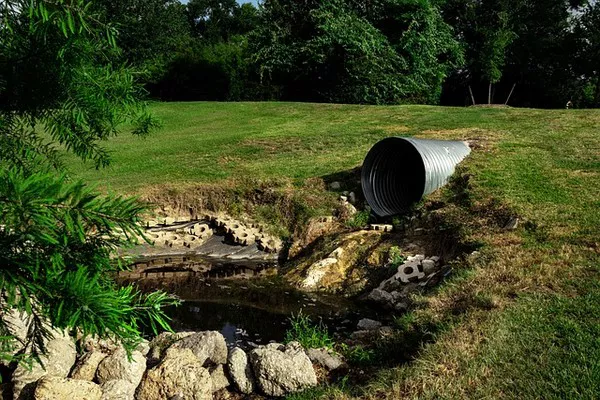Dissolved Oxygen (DO) is a critical parameter in the operation of aeration tanks within wastewater treatment facilities. Maintaining optimal DO levels is essential for the effective degradation of organic pollutants by microorganisms. Insufficient DO levels can lead to incomplete treatment, increased odor, and potentially regulatory non-compliance. This article explores strategies to increase DO levels in aeration tanks, ensuring efficient biological treatment processes.
Understanding Dissolved Oxygen in Aeration Tanks
Aeration tanks are designed to facilitate the aerobic digestion of organic waste. Microorganisms in these tanks require oxygen to break down organic matter into simpler substances, including carbon dioxide, water, and biomass. The efficiency of this process hinges on maintaining adequate DO levels, typically between 2-4 mg/L, depending on the specific treatment objectives and the type of microorganisms involved.
Factors Influencing DO Levels
Before addressing methods to increase DO, it’s essential to understand the factors that influence DO levels in aeration tanks:
Oxygen Transfer Efficiency (OTE): This is the effectiveness with which oxygen is transferred from the air to the wastewater. Factors such as aerator type, design, and operational conditions affect OTE.
Wastewater Characteristics: The organic load, temperature, pH, and presence of other substances in wastewater impact the DO demand. Higher organic loads and temperatures generally increase the oxygen demand.
Mixing and Aeration Configuration: The configuration of aeration devices and the mixing intensity affect the distribution of oxygen throughout the tank.
Microbial Activity: The activity level of microorganisms is directly proportional to the DO consumption rate. Higher microbial activity increases the oxygen demand.
Strategies to Increase DO Levels
1. Optimizing Aeration System Design
Upgrade Aerators: Modern aerators, such as fine bubble diffusers, can significantly improve oxygen transfer efficiency compared to older coarse bubble systems. Fine bubble diffusers create smaller bubbles that increase the surface area for oxygen transfer, enhancing DO levels.
Aerator Placement and Distribution: Ensure even distribution of aeration devices throughout the tank. Uneven distribution can lead to areas of high and low DO concentrations, affecting overall treatment efficiency.
Upgrade to High-Efficiency Aerators: Newer aerator technologies offer higher efficiency and lower energy consumption. Evaluating and upgrading to high-efficiency aerators can provide better DO levels while reducing operational costs.
2. Enhancing Oxygen Transfer Efficiency
Maintain Aerator Equipment: Regular maintenance of aeration equipment is crucial. Accumulation of biofilm or clogging in diffusers can impede oxygen transfer. Routine cleaning and inspection ensure optimal performance.
Optimize Airflow Rates: Adjusting the airflow rate to match the oxygen demand of the wastewater can help maintain appropriate DO levels. Aeration systems should be configured to adjust airflow rates dynamically based on real-time DO measurements.
Utilize Oxygen-Enriched Air: In cases where additional oxygen is required, consider using oxygen-enriched air instead of atmospheric air. This approach can be particularly beneficial for facilities with high organic loads.
3. Implementing Advanced Control Systems
DO Controllers: Advanced DO controllers and sensors provide real-time monitoring and adjustment of DO levels. These systems can automatically regulate aeration rates based on the actual DO concentration, improving efficiency and response times.
Integrated Process Control: Utilize integrated process control systems that manage aeration in conjunction with other treatment processes. This holistic approach can optimize overall treatment performance and DO levels.
4. Adjusting Operational Parameters
Optimize Mixing: Adequate mixing is essential for maintaining uniform DO levels throughout the tank. Adjust the mixing intensity to ensure thorough mixing of wastewater and effective distribution of oxygen.
Control Loading Rates: High organic loading rates can increase DO demand. Managing loading rates and balancing the influent can help prevent excessive oxygen demand and maintain stable DO levels.
Temperature Control: Since DO solubility decreases with increasing temperature, controlling the temperature of the wastewater can help maintain higher DO levels. Implementing temperature control measures, if feasible, can improve oxygen availability.
5. Regular Monitoring and Maintenance
Frequent DO Measurement: Regularly monitor DO levels using reliable sensors and instruments. Frequent measurements help detect any deviations from optimal DO ranges and allow for prompt adjustments.
Inspect Aeration Equipment: Routine inspection and maintenance of aeration equipment prevent issues that could impact DO levels. Addressing problems such as clogging or wear and tear promptly ensures continuous optimal performance.
Evaluate System Performance: Periodically assess the performance of the aeration system and make adjustments as needed. Performance evaluations can help identify areas for improvement and optimize overall DO management.
Addressing Challenges and Limitations
While the strategies outlined can effectively increase DO levels, several challenges may arise:
Cost Implications: Upgrading equipment and implementing advanced control systems can involve significant costs. A cost-benefit analysis should be conducted to ensure that investments align with operational budgets and performance goals.
Energy Consumption: Enhanced aeration and oxygen transfer efficiency may lead to increased energy consumption. Consider energy-efficient technologies and practices to mitigate potential cost impacts.
System Complexity: Advanced control systems and equipment upgrades can add complexity to operations. Ensure that staff are adequately trained to operate and maintain new technologies effectively.
See Also What is mbr technology in wastewater treatment
Conclusion
Increasing DO levels in aeration tanks is vital for maintaining efficient wastewater treatment processes. By optimizing aeration system design, enhancing oxygen transfer efficiency, implementing advanced control systems, adjusting operational parameters, and conducting regular monitoring and maintenance, facilities can ensure adequate DO levels and improve overall treatment performance. Addressing potential challenges and limitations with careful planning and cost management will further support the successful implementation of these strategies. Ultimately, a well-maintained aeration system not only enhances treatment efficiency but also contributes to the sustainable operation of wastewater treatment facilities.

